History of Velikiy Novgorod
Who can resist God and Veliky Novgorod?
An old Novgorod proverb
Novgorod is one of the most ancient Russian cities. In the episode about the calling of King Rurik to Rus' in 862 with his brothers as crisis managers, the Novgorod chronicler writes: 'And the gray elders in Novgorod, so his name is Rurik... and from those Varangians, nicknamed Rus', and from those the word Russian land begins', and in the Tale of Bygone Years: 'Rurik... came to Ilmen Lake and made down the city above Volkhov river and called both Novgorod and became ruler and distributed the volosts and cities to his peoples...' , i.e. According to the Novgorod chronicles, the city already existed in 859, according to the Kyiv chronicles, it was founded by Rurik a little later. In 1959, the first date was recognized as the starting point and the 1100th anniversary of Novgorod was solemnly celebrated.
In the 10th century Novgorod was a large inter-tribal fortified center that united fortified settlements located outside its borders. It is assumed that these are the villages of Slovensky (Holm) - on the right bank of the Volkhov river opposite the modern Kremlin (Detinets), Narevsky - to the northwest of the Kremlin on the left bank of the river and Lyudin - on the same bank of the river, but in the southwest. Traces of fortifications of the 10th century have not yet been discovered in Novgorod, although it is difficult to imagine that it could live without them. The fortifications of Novgorod are first reported in chronicles as follows: 'In the summer of 6552 [1044]. Go Yaroslav to Lithuania; and in the spring, Volodymyr founded Novgorod and built it.'.
The fortress of this period occupied an area approximately half the size of the current Detinets (Kremlin) and was located in its northern part, and included the St.Sophia Cathedral and the surrounding buildings of the bishop's courtyard.
In 1045, nine years after the foundation of the Kyiv St. Sophia Cathedral, the Novgorod St. Sophia Cathedral was founded - a majestic and grandiose building, clearly intended to compete with the Kyiv's one. Perhaps it is worth talking not about Novgorod’s subordination to Kyiv, but rather about rivalry. At the end of the 9th century Novgorod conquered Kyiv, but then recognized its primacy, accepted its rulers and paid him tribute, without, however, abandoning attempts to change this painful situation.
'In the same summer [1116] Mstislav founded Novgorod more than first. That same summer, Pavel, mayor of Ladosky, founded the city of Ladoga in stones'. The area of Detinets doubled due to the inclusion in the perimeter of the fortifications of a large area with an ancient market on the south side.
By the end of the 12th century. the city grew and spread out on both banks of the Volkhov river. Among the wooden buildings numerous stone churches arose and among them the huge and majestic St. Sophia Cathedral - the seat of power and the symbol of the city. On the right bank of the river opposite Detinets there was a large market with foreign merchant yards and piers. In Detinets, in places where city streets approached it, gate stone towers were erected. Along with Detinets, there was another center of power in Novgorod - the knjaz residence on Yaroslav's Court with its own Cathedral of St. Nicholas and a clergy separate from Sophia.
Novgorod also had an external wooden-earth fence with wooden towers, encircling the entire outlying city, which was called the Great Zemlyanoy Gorod. The chronicle reports that in 1169 the Novgorodians 'established a fort near the city'.
From the time of its foundation, Novgorod enjoyed a certain independence, and the Novgorod knjaz never had such complete power as in the other Russian principalities. Back in 1014, the Novgorod knjaz Yaroslav Vladimirovich the Wise stopped paying tribute to Kyiv and later, becoming the Kyiv's knjaz in 1017, for the help of the Novgorodians in the fight against Svyatopolk 'Okojanny', he granted special privileges to Novgorod, which later became the legal basis for its independence.
In 1136, a people uprising took place in Novgorod, as a result of which knjaz Vsevolod Mstislavich was expelled with the wording 'do not respect the smerds rights' and a veche republic was established. The right to conscription and removal of the knjazes was assigned to the veche (all city residents assembly), and the latter was greatly constrained in the rights and opportunities stipulated in a special agreement - rjads. The rights to property within the republic, the right to distribute land plots and privileges, courts and trade with foreign countries were taken away from knjaz. The knjaz could not collect taxes himself, as it was in Kyiv, but received from the city an agreed upon monetary allowance - a 'gift'. And from now on the knjaz was called the word “lord”, but not “sovereign”, since the latter, according to Novgorod concepts, was only among slaves. From now on, the Novgorodian swore allegiance not to the prince or the sovereign, but to 'Gospodin Veliky Novgorod'. The veche was the highest legislative body of the republic and main source of power.
Actually, the veche gathered only to resolve the most important issues - declaring war and concluding treaties, introducing new taxes, choosing a knjaz, starting important construction projects, etc., and there was no system for counting votes, and the choice of decisions was determined 'by ear' (i.e. whose party cry louder). It happened that when discussing fateful issues, fists were used often. Sometimes two veches functioned simultaneously in the city - one at the St. Sophia Cathedral, and the other at the Yaroslav's Courtyard. Having made diametrically opposed decisions, both parties met on the bridge across the river Volkhov, where, during a general fist-fight discussion, a final consensus could be reached, while the homes and property of the losing side could be subject to robbery and pogrom.
At the beginning of the 15th century for the first time in Rus', in Novgorod, the principle of equality of citizens before the law was legislatively enshrined - “judge everyone equally, both the boyar and the common man and the young man.” Formally, this was a great achievement, although in reality the boyars, with the help of bribery and intrigue, could manipulate the decisions of the veche for their own benefit; it was not without reason that in those days they said that Novgorod was ruled by the so-called '300 golden belts'.
Executive power in the republic was exercised by the Council of Gentlemen, which determined the agenda for the veche. It was headed by the Novgorod archbishop, independent of the Kyiv metropolis, who was also in charge of the treasury and had the right of court and relations with foreign countries. For him, a special fortified courtyard with its own fortress walls and towers was built near the St. Sophia Cathedral in Detinets. Each city part (as it was nemed 'end') had its own boyar organization associated with the corresponding pyatina (region) of the republic, whose representatives competed for the positions of mayor and head of city militia ('tysatskiy').
In 1201, Vsevolod the Big Nest subjugated Novgorod, and city briefly recognized the sovereignty of the Vladimir, but in 1216, as a result of the Battle of Lipitsa, the republic regained its independence. From the beginning of the 13th century the appearance of the German threat on the western borders required strengthening the military power of the republic, so the Novgorodians invited knjaz Alexander Yaroslavovich, who received the nickname Nevsky after the defeat Swedes on the Neva river in 1240, to reign. Despite certain friction with the veche, the he enjoyed authority in Novgorod.
During the heyday of the republic, Novgorod was the center of the largest state formation in Europe with colossal land holdings from the Gulf of Finland to the Urals mauntins and the Middle Volga. The Novgorod chronicle (from 1077) is the oldest in Rus'. The oldest monument of Russian law - 'Russian Truth', appeared in Novgorod. Novgorod wooden pavements are 200 years older than those in Paris, and already in the 12th century there was a water supply system made of wooden pipes (albeit on a limited scale in the area of Yaroslav's Court).
From 1302 to 1311, new stone towers of Detinets were erected, and after that, in 1335, the mayor Fedor and the tysatsky Ostafey supervised the reconstruction in stone of the entire outer southwestern wall of the city. By 1391, all wooden towers in the outer wall were replaced with stone ones and the width of the earthen rampart was increased, and by the end of the 14th century four more stone towers were built. The fortress walls of this period were 1.5-1.7 m thick and consisted of slabs and cobblestones with lime mortar. The towers had a rectangular shape in plan and protruded beyond the line of the walls for flank shelling, and had from 3 to 5 combat tiers with wooden floors. The reconstruction of Detinets in stone was completed in the 1430s.
In the 15th century Novgorod land was much larger in area than the Principality of Moscow, but in military strength it was far inferior to Moscow. After the inclusion of the Volga region lands into the Moscow state, it could control the ways of supplying Novgorod with grain, which the northern republic was always in great need of. Not feeling able to resist Moscow, Novgorod tried to find an ally in the west in the person of the King of Lithuania, Casimir the Great, but he avoided direct collision with Moscow.
In 1470, Ivan III, citing the fact that Novgorod “from ancient times” was the patrimony of the Vladimir's rulers, and declaring Novgorod democracy as “the devil’s charm,” demanded its complete submission and set out on a campaign. In July, the hastily assembled and poorly armed Novgorod militia clashed on the Shelon River with the army of the tsarist governor Kholmsky. At first, the Novgorodians fought a lot and beat the Muscovites a lot, but in the end they lost the battle, burned the settlements and locked themselves in the city, but Archbishop Theophilus insisted on peace negotiations. The agreement with Moscow retained Novgorod's liberties, but Novgorod undertook not to surrender to Lithuania and to pay a large indemnity.
In the autumn of 1475, Ivan III arrived in Novgorod 'peacefully', but with a large army. The Tsar demanded that the Novgorodians recognize him as sovereign with all the ensuing consequences (abolition of the Novgorod court, etc.). The veche categorically refused the tsar and dispersed the boyar government. In 1477, Ivan III, at the head of the Moscow-Tver army, again marched on Novgorod. The Novgorodians, led by the governor Prince V. Grebenka-Shuisky, hastily repaired the city fortifications, but there was no unity in the city. The Novgorod archbishop insisted on negotiations with the Muscovites. On November 23, the Novgorod ambassadors with the archbishop at their head arrived at the royal tent, where they were told: 'We, the Grand Duke, want our state as we are in Moscow, so we want to be in Veliky Novgorod'. When the ambassadors reported about this evening, a great rebellion and disorder arose, the governor fled to the Muscovites, and finally, on January 15, 1478, the Novgorodians opened the gates to the tsar's governors.
From that moment on, a veche was never convened in Novgorod, the veche bell was taken to Moscow, democratic orders were abolished, about 7,000 boyars and so called “living (good) people” were sent into exile, and their property went to the treasury.
Having new possessions in their hands, the Moscow government became concerned about strengthening and protecting them. In 1484, the Tsar ordered Detinets to be rebuilt “on the old basis,” i.e. preserving the old lines of the walls, adapting the fortress for fire battle. New walls were built on old foundations and using fragments of old walls. The walls were lined with bricks outside and inside, and filled with boulders, limestone surrounds and broken bricks inside. The walls had a two-meter wide wall walk, dovetail-shaped battlements and semicircular arches on the inside. The thickness of the walls was 3.5-6.5 m, and the height was 8-15 m. The tower loopholes were adapted for the use of firearms. Construction was completed in 1499, while Detinets (or the Kremlin, as it came to be called) had 13 towers, of which 9 have survived to this day. The external defense belt (Okolny Gorod, Bolshoi Zemlyanoy Gorod or Ostrog) was also improved and strengthened. During the 15th century the shaft was poured from the inside, so that its width at the base reached 20 m, while wooden frames filled with earth were built into the structure of the shaft to resist erosion.
In the first half of the 16th century underwent reconstruction of the fortifications of the Okolny City on the Sofia side and the opposite Trade side: a new wooden wall with wooden towers was erected on the rampart, while the old stone towers were dismantled. In the walls of the Kremlin, loopholes of plantar combat with huge combat chambers were made, two loopholes per spindle. The Novgorod fortress was improved and rebuilt, actively preparing to repel a foreign enemy, but new trials came from a completely different direction...
The Novgorod pogrom of 1570 is one of the bloodiest and most disgusting episodes of the oprichnina and, perhaps, of the entire Russian medieval history. His goals were to replenish the oprichnina treasury and intimidate the people in order to eliminate the danger of rebellion, and the reasons (or rather, one of the main reasons) were the long-standing trade, cultural and military rivalry between Novgorod and Moscow. The reason for the pogrom was the so called “Izborsk treason,” when the Lithuanians, with the help of traitors disguised as guardsmen, took possession of Izborsk fortress, after which Tsar Ivan XIV began to suspect Novgorod and Pskov of treason. On January 8, 1570, the tsar, at the head of the oprichnina army, arrived in Novgorod. After a short service in the St. Sophia Cathedral, Archbishop Pimen was captured and accused of treason. The guardsmen plundered the St. Sophia Cathedral, and at the same time broke the ancient Korsun Gates - the famous Novgorod relic, according to legend, brought here from Korsun by the first Novgorod bishop. Many noble citizens and members of their families were arrested, brutally tortured and then killed. Torture and executions continued in the city for about four weeks; the bodies of those killed and those still alive were drowned in ice holes on the river Volkhov.
The Novgorod pogrom stunned contemporaries. The chronicler claims that either 20 or 60 thousand were killed, this is apparently an exaggeration, since even at its peak the city had barely 30 thousand inhabitants (though it must be said that many refugees from famine arrived in the city in 1569). The 'Synodik of the Disgraced' of Tsar Ivan the Terrible (the guardsmen's report on the work done) gives the number 3-4 thousand, but it does not include all those killed common people, as well as those who died of hunger and cold among those expelled outside the city, so the exact number of dead it is no longer possible to determine. The pogrom of 1570, as well as the famine that preceded it, dealt Novgorod such a blow from which it never recovered.
In 1582-87 the so-called Middle (Small Zemlyanoy) City was built - a belt of fortifications that covered the Kremlin from the opposite river side. It stood 80-100 meters from the Kremlin walls and has a wooden fence with towers on a bastion rampart. In front of the rampart there was an eight-meter-deep ditch with wood-lined scarp walls. The wall about 2 km long, had 6 bastions of regular shape.
During the Time of Troubles of 1608 in Novgorod, the royal governor M. Skopin-Shuisky negotiated with the Swedes about sending an auxiliary corps of 15,000 people to help in the fight against the impostors. At the end of March 1609, a Swedish army of five thousand, led by 26-year-old Jacob de la Gardie and experienced military leaders E. Horn, H. Somme, A. Kurk, approached Novgorod. De la Gardie was solemnly received in the Novgorod Kremlin, where he and Skopin-Shuisky signed a Russian-Swedish agreement on assistance. At the beginning of May, Swedish and Novgorod troops marched towards Moscow.
After the Klushino defeat in June 1610, De la Gardie and Horn, together with their Swedes and Finns, moved back to Novgorod. In July, Swedish troops appeared under the city walls, and two major clashes took place with the Novgorod militia. At dawn on July 16, the Swedes began their assault on the city with a demonstration attack in its southeastern part. De la Gardie did not have siege artillery, so the Swedes decided to blow up the gates with firecrackers. The main attack on the Okolny City from the west failed, but, according to the Novgorod chronicle, treason occurred (a man named Ivashka Shval opened the Dudintse Gate, and the Swedes broke into the Okolny City). The defenders retreated to the Kremlin, which was not properly prepared for defense, it did not have the necessary reserves of gunpowder and provisions, which is why the commanders of the defense, Governor Odoevsky and Metropolitan Isidore, decided to surrender the city. De la Gardie imposed an agreement on the Novgorodians to elect one of the sons of the Swedish king as the Grand Duke of the Novgorod state, which, however, was not fulfilled due to the death of Charles IX and the change in Swedish foreign policy by the new king Gustav II Adolf. In 1617, an eternal peace was concluded in Stolbov, according to which the Swedes returned Novgorod to Russia.
On March 15, 1650, a popular uprising broke out in Novgorod. The reason was the rapid rise in bread prices caused by government speculation in grain. On April 13, tsarist troops occupied the city without encountering resistance. At the end of April, a search and reprisal began, and about 300 people were arrested, five were sentenced to death.
In the 17th century, the decline of Novgorod continued. In the 1690s. Large sections of the walls of the Okolny City collapsed, and the great fire of the Trade Side of 1696 completed the devastation.
After the Narva defeat in 1701, Peter I ordered the city's fortifications to be repaired. The wooden walls and towers of the Middle City were broken down, and the height and width of the ramparts were increased. The bastions also underwent reconstruction and received new parapets. With the end of the Northern War and the transfere of the border far to the west, the Novgorod fortress lost its military significance, and in May 1720 the military garrison was withdrawn. Urban industry in the 18th century developed poorly, working people left the city for St. Petersburg. With the development of railways, trade transportation along the Volkhov river completely ceased, which further aggravated economic difficulties. Veliky Novgorod turned into a row provincial city of the Russian Empire. During the reign of Catherine II, all the fortifications of the Okolny City were dismantled, with the exception of one White tower. In 1820, the Zemlyanoy (Middle) City fortifications were razed too.
In the 20th century Hard times have come for Novgorod again. German air raids began on July 8, 1941 and were carried out several times a day until August 15, 1941, when the Germans approached the city. On August 14, they began shelling the fortifications of Novgorod with artillery. The German 1st Army Corps of the 16th Army (Colonel General von Busch) was advancing on the city. The city was defended by the Soviet 28th Tank Division I.D. Chernyakhovsky in cooperation with the 1st Mountain Rifle Brigade. By evening, Soviet troops were pushed back into the city and took up positions along the rampart of the Okolny City. All day on August 15, the Germans stormed the ancient earthen rampart and by evening forced the Soviet troops to roll back beyond the Volkhov, but the Novgorod Kremlin still remained in their hands. The Germans subjected it to an air raid, huge gaps appeared in the walls, and fires started in the fortress. On August 18, the remnants of the Kremlin garrison broke through to the right bank of the Volkhov river. The next day, Soviet troops left Novgorod and retreated across the Maly Volkhovets River. The Germans were unable to advance further east, and the front stabilized near Novgorod, which became a front-line city.
On January 14, 1944, troops of the Soviet 59th Army (commander - General I. Korovnikov) of the Volkhov Front, during the Novgorod-Luga operation, went on the offensive from a bridgehead north of Novgorod, at the same time Soviet units, having crossed the ice of Lake Ilmen, captured a bridgehead south of Novgorod. The German troops in the city found themselves caught in a pincer movement and began a hasty retreat. On the morning of January 20, the troops of Soviet 59th A freed Novgorod. There were practically no inhabitants left in the city; only after the end of the fighting did several hundred people emerge from the forests and surrounding villages. Churches in the city, walls and towers of the Kremlin, ancient buildings were completely destroyed or severely damaged. On September 1, 1944, the Council of People's Commissars of the USSR adopted a resolution 'On measures for the restoration of Novgorod', and in November 1945, Novgorod was included in the list of 15 Russian cities that were subject to priority restoration. The city had to be built practically from the scratch.
In 1951-62 the largest excavation in Novgorod was explored - Nerevsky raskop on the Sofia side, covering an area of more than 10,000 square meters. Several thousand wooden log buildings have been excavated in Novgorod, mostly residential ones. Using modern scientific methods (dendrochronology), an absolute archaeological chronology of Novgorod buildings has been developed with an accuracy up to a year and a chronological scale of numerous finds with an accuracy up to a decade.
On July 26, 1951, the first birch bark letter was discovered in the area of Kholopya Street at the Nerevsky End. On a piece of birch bark were visible letters that formed into words, and words into phrases. The next day they found several more letters. This find made a stunning impression - nothing like this had ever been found on Russian territory. A small part of the found documents are business documents, but the majority are private letters, which confirms the thesis about the widespread spread of literacy among the population of the Novgorod Republic in the 11th-15th centuries. To date, several hundred birch bark letters have been found.
On December 14, 1992, the historical monuments of Novgorod and its surroundings were included in the UNESCO World Heritage List. Novgorod is part of the International Union of the 'New Hanseatic Time'. In 1998, by decree of the President of Russia, the ancient name Veliky Novgorod was returned to the city. The revival of the city continues, although it still bears the indelible stamp of provincialism, which, generally speaking, is not at all bad, but on the contrary, it is correct. The country does not consist of brilliant capitals with their nauseating gloss, but of such provincial cities, villages and towns as Novgorod.
Questions:
'The whole lower land and all Rus' rose against Novgorod...' (old letopis). So, isn’t Novgorod Rus'? They, Novgorodians, did not consider themselves as Russia in the 14th century? What was Rus' then? Or what if the Novgorodians came to an agreement with the Tatars and pushed their protege onto the Vladimir throne? If Novgorod had conquered Moscow, not vice versa, then perhaps the financial center of the world would have ended up not on Wallstreet, but on Prusskaya Street in Novgorod?
Such dangerous questions come to mind during leisurely walks under the walls of the Novgorod Kremlin. You're about to hit a brick in your restless head...
PS: However, if Novgorod had turned out to be the capital of Russia, I’m not sure that more antiquity would have been preserved here than now. The example of Moscow is clear evidence of this - where is it, old Moscow?
Land forts and fortress:
Bip Castle Gatchina Ivangorod Izborsk Kexholm Kirillov Monastery Koporye Novgorod Pechorskiy Monastery Peter&Paul Fortress Porkhov Pskov Schlisselburg Staraya Ladoga Tikhvin Vyborg Hameenlinna Hamina Kastelholm Kymenlinna Lappaenranta Raseborg Castle Savonlinna Tavetti Turku Visby Fredrikstadt Fredriksten Hegra Fort Hoytorp Fort Arensburg Narva Tallinn Antipatris Caesarea Jerusalem Latrun Fort Masada
Sea forts and fortresses:
Alexander Fort Ino Fort Krasnaya Gorka Fort Kronstadt: Kotlin isl. Kronstadt: North Forts Kronstadt: South Forts Trongsund Hanko Svartholm Sveaborg Marstrand Siaro Fort Vaxholm Oscarsborg
Artillery batteries and individual guns:
Coastal Artillery Hemso Fort
Fortified areas and defensive lines:
Karelian Fortified Area (KaUR) KrUR Leningrad Mannerheim Line Nevsky Bridgehead VT Line Harparskog Line Salpa Line Gothland
Russian
S e a r c h All news

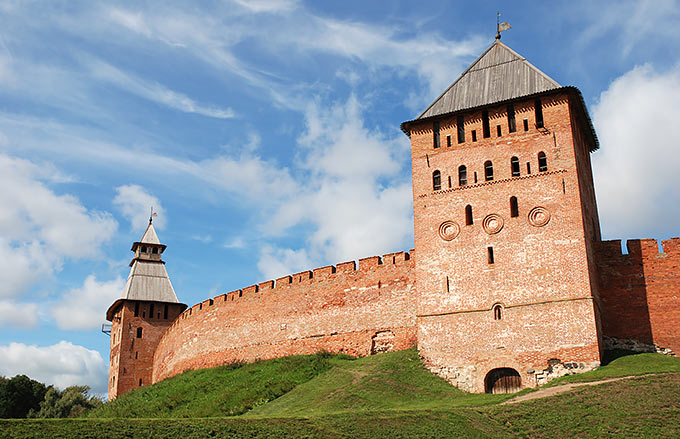 Novgorod Kremlin (Detinets)
Novgorod Kremlin (Detinets)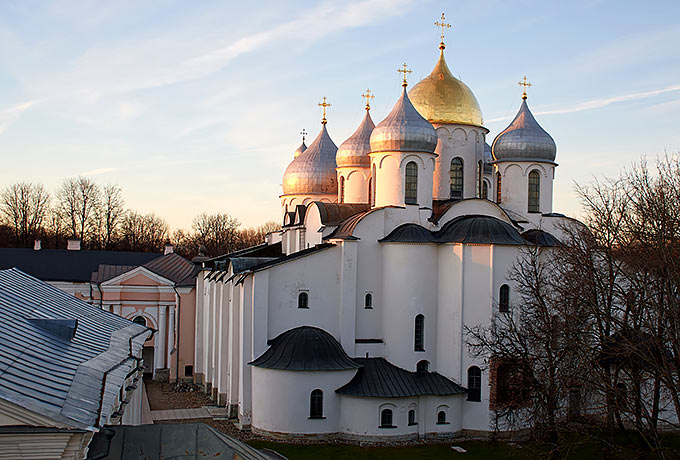 St. Sophia Cathedral in the Novgorod Kremlin
St. Sophia Cathedral in the Novgorod Kremlin
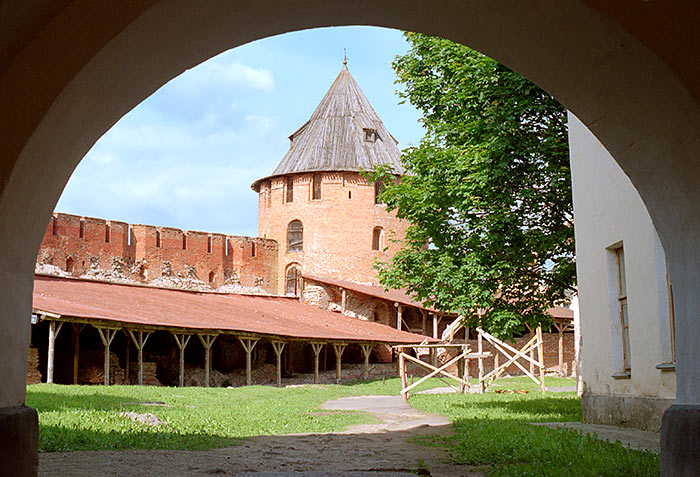 Fedorovskaya Tower in the Novgorod Kremlin
Fedorovskaya Tower in the Novgorod Kremlin
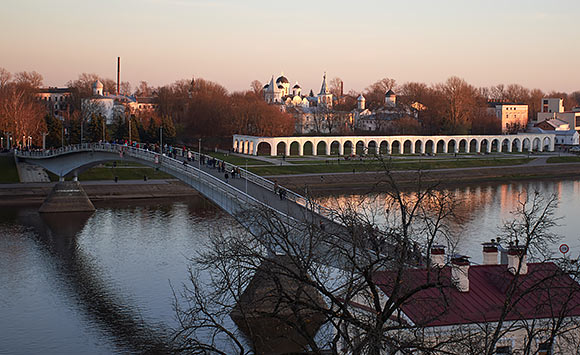 Torgovaya (Trade) side and bridge over Volkhov river
Torgovaya (Trade) side and bridge over Volkhov river
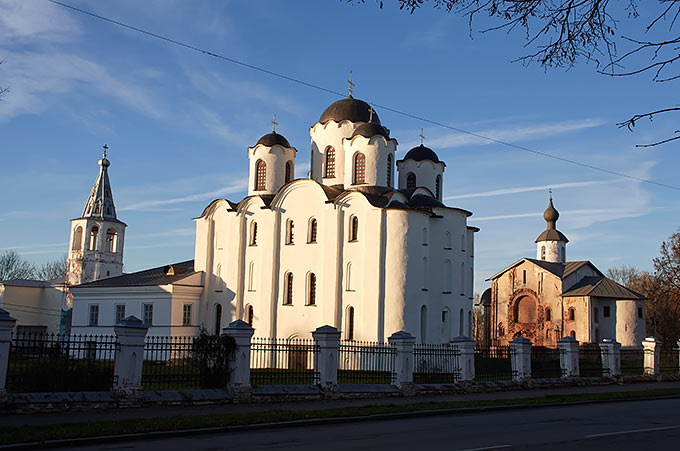 Medieval churches on Yaroslav's Court
Medieval churches on Yaroslav's Court
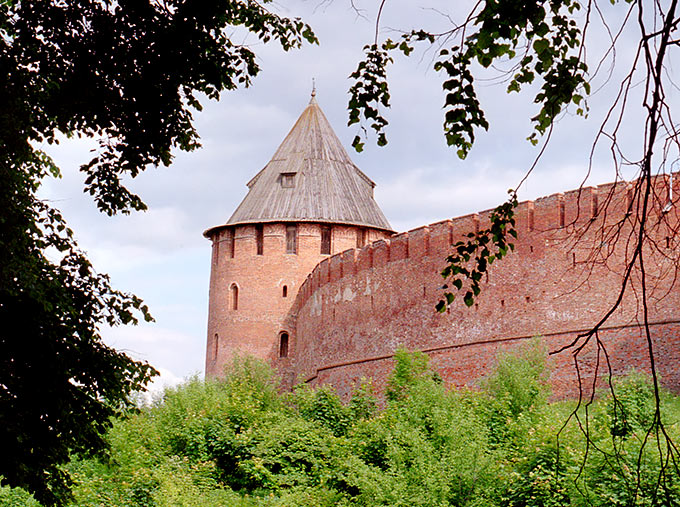 Metropolitan Tower of the Novgorod Kremlin
Metropolitan Tower of the Novgorod Kremlin
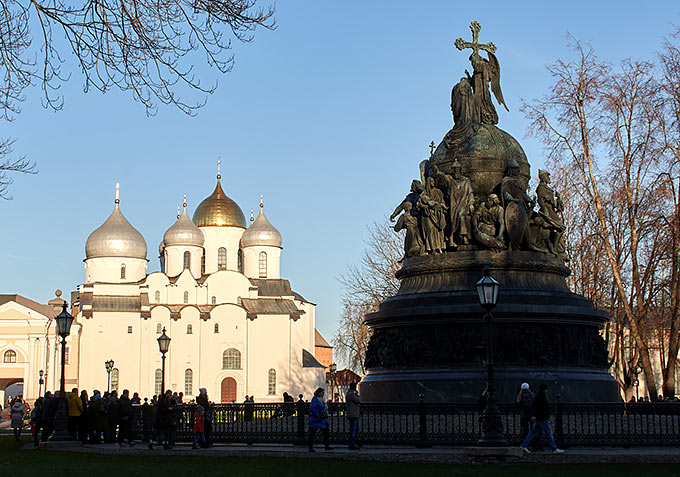 Monument to the 1000th anniversary of Russia in the Novgorod Kremlin
Monument to the 1000th anniversary of Russia in the Novgorod Kremlin
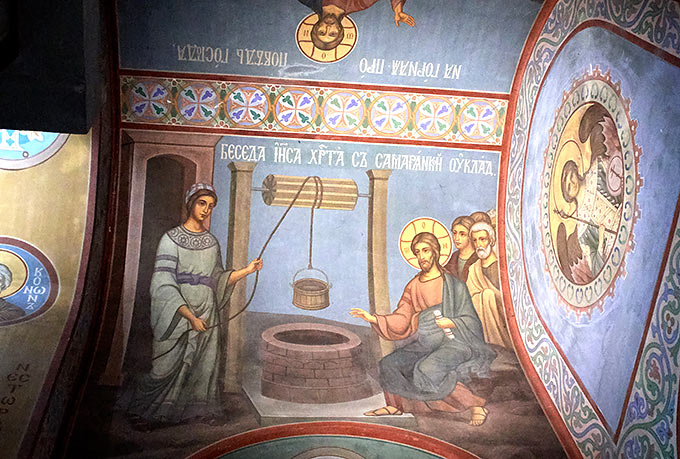 Painting the vaults of St. Sophia Cathedral
Painting the vaults of St. Sophia Cathedral
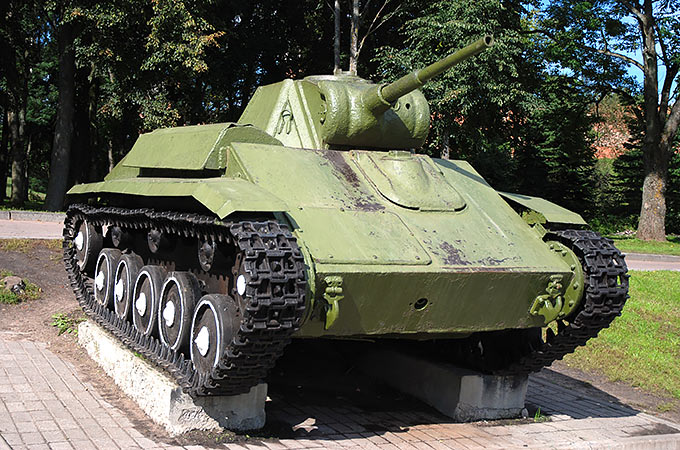 Light tank T-70
Light tank T-70
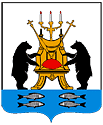
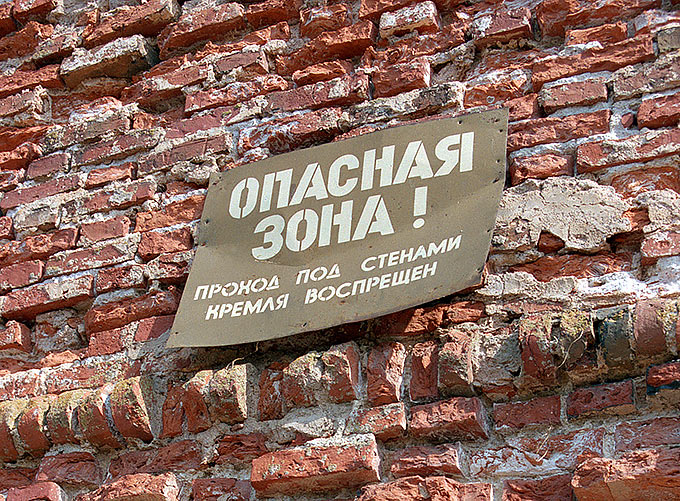 Danger zone - The inscription on the wall of Detinets
Danger zone - The inscription on the wall of Detinets
